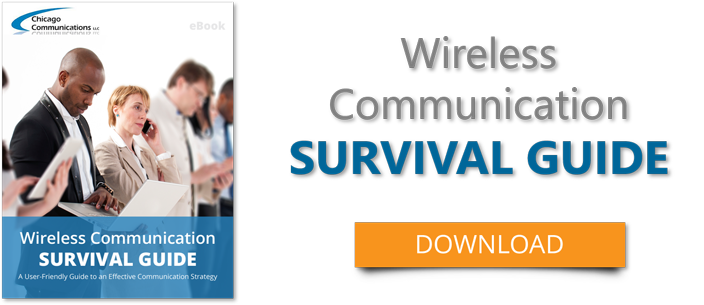 When it comes to communication in manufacturing, hospitality, healthcare, and transportation, performance and reliability is a must. But too often, this calls for wired infrastructure that is cost-prohibitive and impractical. This is where wireless technology and, specifically, point to point connectivity can be a difference maker.
When it comes to communication in manufacturing, hospitality, healthcare, and transportation, performance and reliability is a must. But too often, this calls for wired infrastructure that is cost-prohibitive and impractical. This is where wireless technology and, specifically, point to point connectivity can be a difference maker.
The Downside of Wired Infrastructure
Providing coverage with wired technology indeed is costly. This is due to the need to create an infrastructure, which can involve underground trenching, permits, fees and zone requirements. Businesses must factor in the rising cost of copper lines. And once in place, the wired infrastructure can limit a business’s ability to grow quickly, without additional manpower and time. Wires are set and altering them can be an expensive and invasive process.
Enter the Wireless Solution
Wireless networks present an alternative to wired infrastructure that is often more practical and effective. In effect, wireless networks resolve connectivity issues and go where wired infrastructure simply cannot.
The full benefit of wireless technology is fully realized with the use of Point to Point Connectivity and Point to MultiPoint Connectivity. These configurations are staples of fixed wireless networks and can result in improved communications through:
- Instant access to critical information
- Reliable network connections that minimize downtime and improve productivity
- Extended secure coverage over a wider area
- Increased integration speeds
- Enhanced scalability with easy installation and setup
Understanding Point to Point Connectivity and Point to MultiPoint Connectivity
Point to Point Connectivity is a configuration that links two devices—the sender and the receiver. The wireless channel is reserved for communication between the two devices. As such, communication can be reliable and instant. It can work best when the sender and receiver are close together, and when multiple communications don’t have to reach several devices at once.
If this is the need, Point to MultiPoint Connectivity can help. With a multipoint connection, one device (the sender) is linked to multiple receivers—and a single link is shared by multiple devices.
The benefit of both Point to Point Connectivity and Point to Multipoint Connectivity is that it provides better coverage. With Point to Point Connectivity, transmissions use a single dedicated link. The entire channel is reserved for the two devices, which can increase data transfer speeds and provide uninterrupted service.
With Point to MultiPoint technology, multiple receivers share a single link to a single transmitter. Communication goes from the sender to the multiple receivers. The multiple receivers do not transmit to each other, and instead their communications are only transmitted back to the sender. It’s an ideal solution when businesses have to have a reliable connection to many devices but do not necessarily have large amounts of data to transmit.
Used together, the two types of technology can bolster your wireless networks for improved coverage across your business or enterprise. This is especially important in industries where budgets are tight, but demand is high, such as manufacturing, hospitality, healthcare, and transportation.
Next Steps to Bolster Wireless Technology
There are many ways to get the most out of your wireless networks, from creating distributed antenna systems and bi-directional amplifiers, to establishing Point to Point and Point to Multipoint Connectivity. The solution involves understanding your unique situation and requirements and implementing the best communications plan for your operations. The answer is rarely one size fits all.
To learn more about improving the productivity and potential of your business, contact us. For more information, download our free Wireless Survival Guide.


